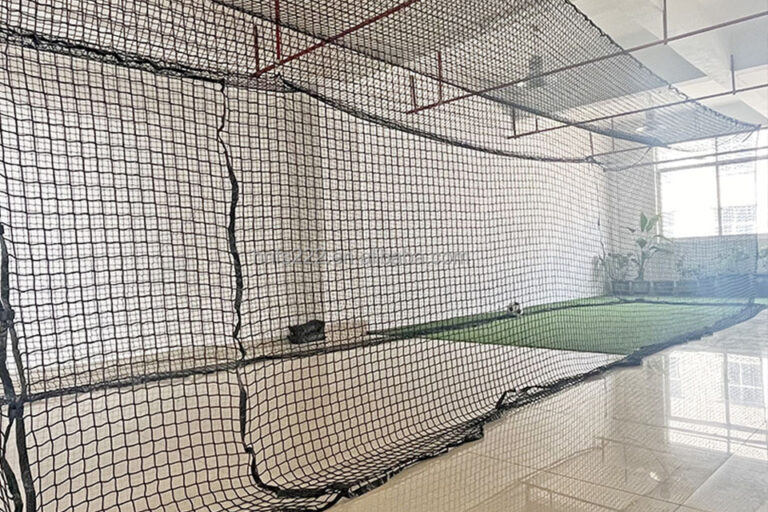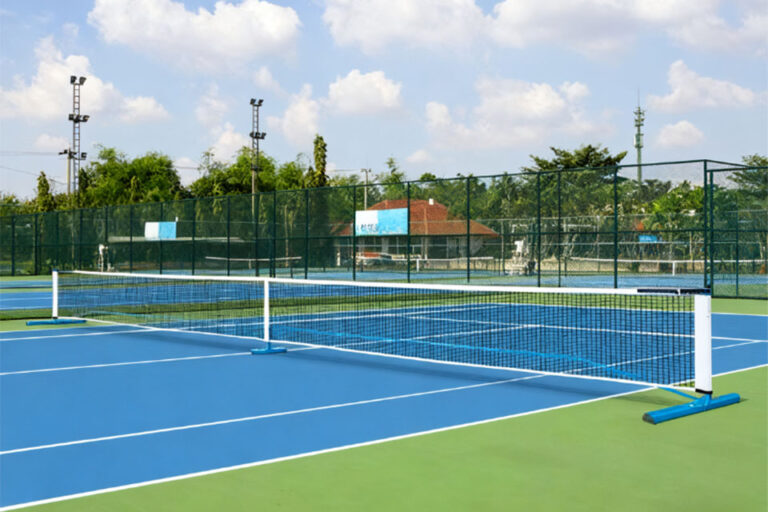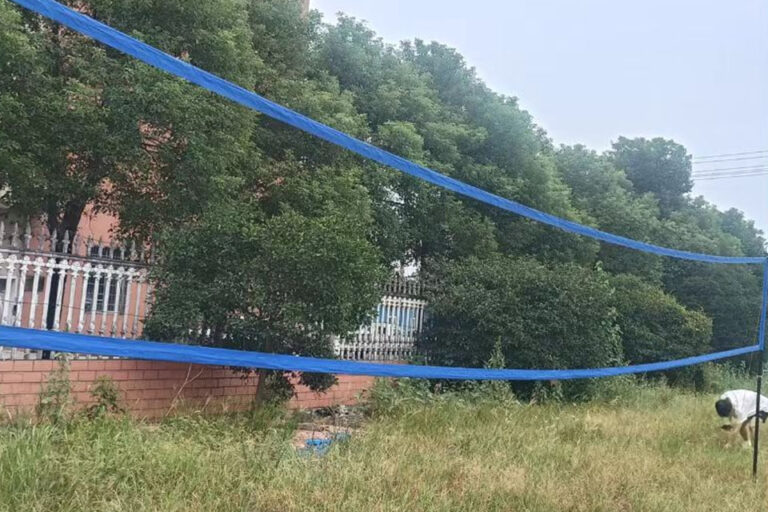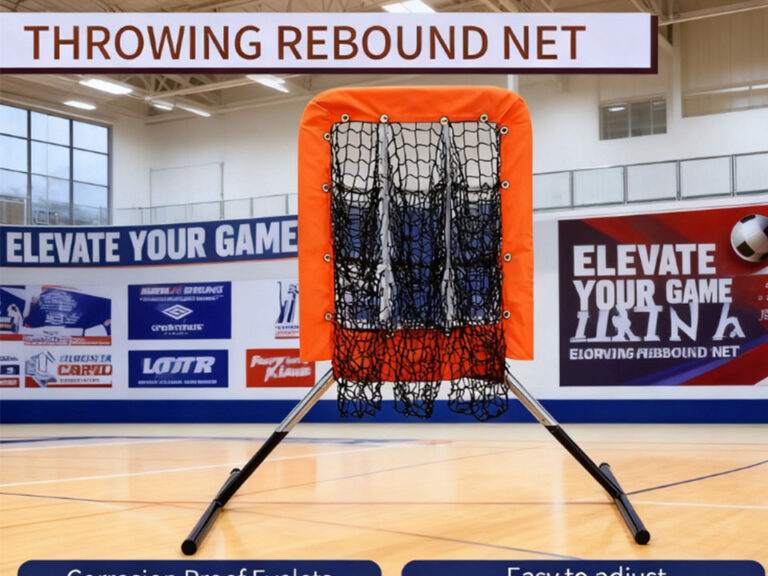Why Pickleball Nets Fail On Busy Community Courts
Busy public courts are great for the sport. They are not great for weak pickleball nets.
If you run a park, a school district, or a chain of facilities, you probably see the same story. You buy a few portable nets. The courts fill up. A few months later the center strap drags, the frame leans, and somebody logs a complaint.
Let’s break down why this keeps happening and where a pro-grade supplier like FSPORTS fits into the fix.
Table of Contents
Heavy traffic on portable pickleball net systems
Most portable nets start life with a simple brief. Backyard. Driveway. Casual games. Community courts are a different universe.
On a busy park court a net may face:
- Open hours from early morning to late evening
- Rotating groups, drills, and ladders
- Kids climbing and leaning between games
A light frame and thin mesh might survive weekend play. Daily league rotation is another story.
If you use a basic kit instead of a reinforced frame, you see:
- Constant re-tightening
- Center height under 34 inches
- Bases that shift as soon as a player bumps the post
A regulation kit built for volume, like a portable regulation pickleball net system, gives you a different baseline. The tubing is heavier. The base is wider. The cross-bar locks in better. The result is less daily babysitting from your crew.
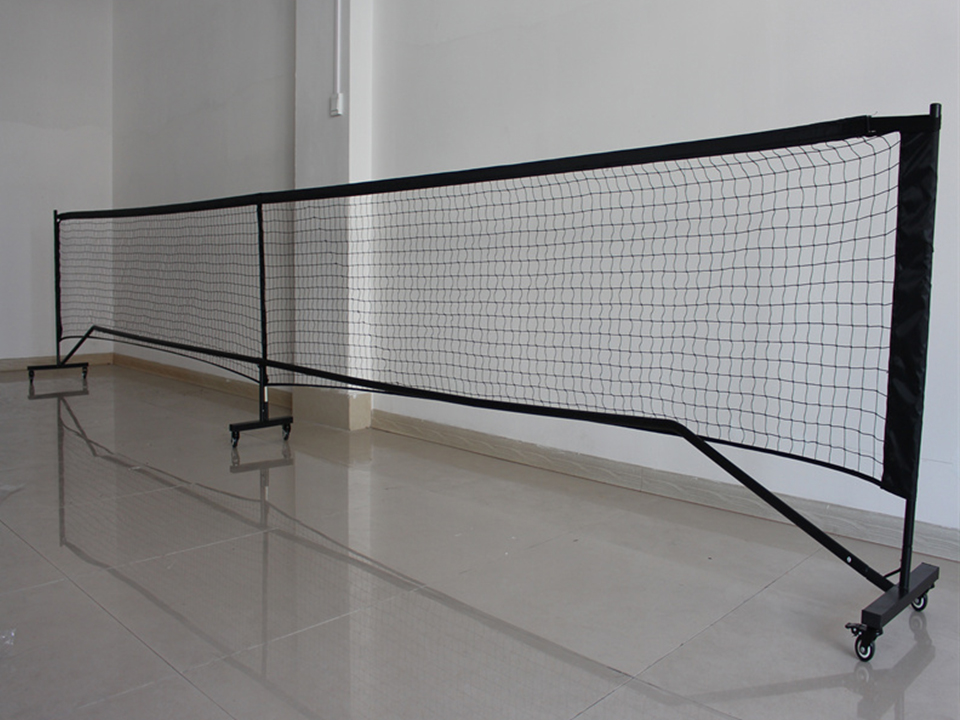
Why a regulation size pickleball net sags and leans on public courts
At the start everything looks fine. Then players show up, the queue grows, and the weak spots show.
Typical failure signs on a busy community court:
- Net tape starts to wrinkle along the top
- Side posts lean in toward the centerline
- The ball clips the tape and drops when it should clear
A high-traffic court pushes every weak detail. If the cable is thin, it stretches fast. If the weave is loose, the mesh deforms. If the feet are small, the whole frame walks forward.
You slow this down with a regulation frame that spreads the load. For example, a reinforced 22-foot kit like the portable pickleball net outdoor 22ft regulation size set is built around busy use. The net body, tape, and hardware all work together instead of fighting your players.
Weak points in a community pickleball net with steel frame
Even on a steel system, not all parts share the same life span. Facility managers see the same stress points again and again.
Here is a simple snapshot you can use with your team.
| Failure point | What you see on court | Root cause on busy courts | What a pro net changes | | | – | – | – | | Top white tape | Fraying, loose stitching, tape rolling over | Constant ball strikes and paddles hitting the band | Thicker tape, reinforced stitching, smoother edge | | Side seams | Small holes growing near posts | Repeated pull when players tighten side straps | Heavier side binding and stronger webbing | | Center strap | Strap slipping or tearing | Players yanking hard to “fix” sagging nets | Wider strap and better buckle design | | Base joints on portable frames | Wobble at the middle or corners | Frequent assembly, disassembly, and dragging | Lock-in joints and larger support feet | | Mesh panels | Localized tears at waist height | Players leaning or catching feet and paddles in mesh | Higher-denier mesh and tighter pattern |
A basic portable kit often cuts corners on these details. A heavier design like the portable pickleball net with steel frame and support feet builds the “problem zones” with more material. That gives you a longer maintenance window before anything reaches failure.
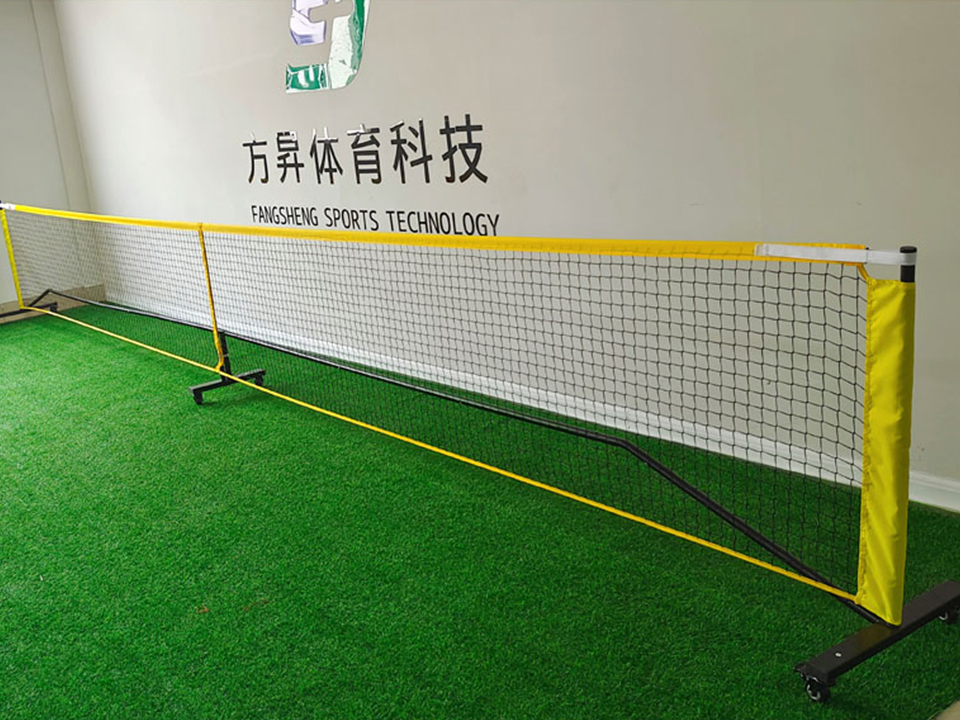
Outdoor weather, UV and wind damage to pickleball nets
Community courts live outside. Your nets do not get rest days.
Sun, rain, and wind create slow, boring damage that adds up fast:
- UV makes untreated fibers brittle
- Constant moisture attacks cheap metal tubes
- Wind loads shake loose fittings day after day
This is where the manufacturing base matters. FSPORTS comes from golf cages, backstops, and barrier nets, so UV-resistant and high-impact mesh is standard, not an upgrade. Netting that holds up in a driving range handles pickleball traffic with margin.
If your site runs year-round, look at full systems designed for outdoor abuse. A robust option like the portable blue pickleball net system with carry bag and frame combines coated frame tubes with weather-tough mesh. That keeps the net in spec longer, which means fewer “out of service” tags on your courts.
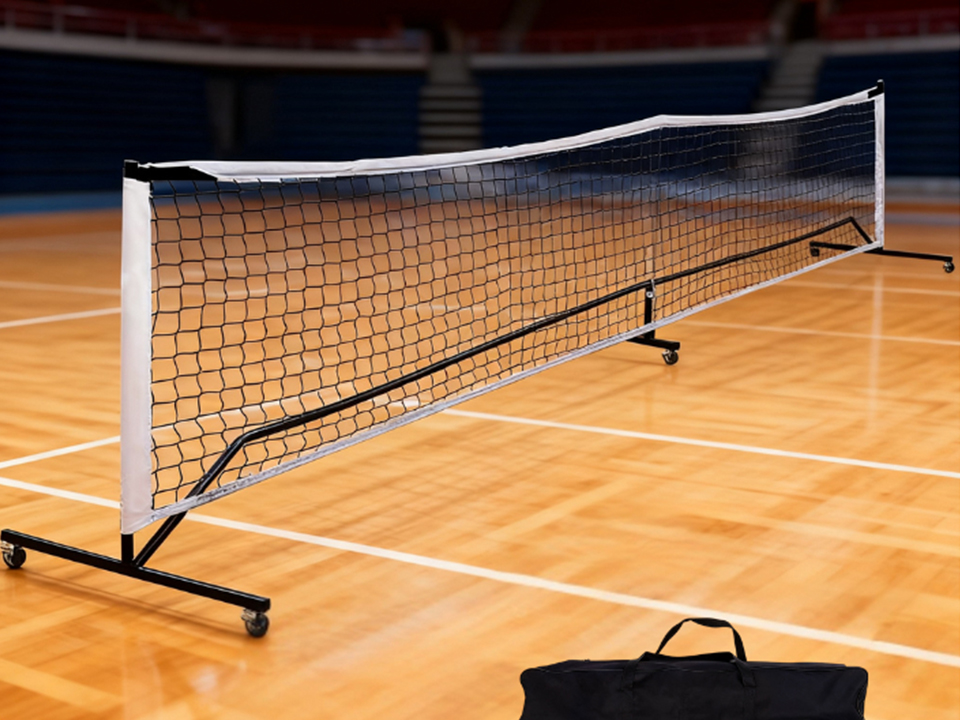
Player misuse and vandalism on shared pickleball courts
Not every failure is about engineering. Some come from behavior.
Common real-world scenes on public courts:
- Players sit on the center of the net while they chat
- Kids try to hurdle the net instead of walking around
- Someone drags the frame by the mesh instead of the legs
- A small group decides the net is a good place to hang a heavy bag
You cannot control every action, yet you can limit the damage.
A system with a solid base and stable geometry, like the portable pickleball net 22ft regulation size pickleball net, handles accidental rough treatment better. The frame takes more of the load so the mesh does not fail first.
For indoor gyms and multi-use halls, an adjustable indoor pickleball net system with steel frame adds flexibility. You adjust height for youth, adult rec, or cross-training without improvising with rope and tape. That removes one more reason for players to pull the wrong part of the net.
Pickleball rebounder net and extra training load
High-volume facilities do more than casual games. You run clinics, drilling blocks, junior programs, and team sessions.
All of that creates extra load on your equipment. Coaches may use the net as a backstop for constant dinking drills or power drives. Players may hammer the same square meter for an hour.
That is why you see more sites adding dedicated training tools like an adjustable pickleball rebounder net with 5 target zones. You move repetitive impact to a unit that is built to take it. Your main court nets handle regular play instead of acting as catch-all gear.
When you split usage like this you spread wear smarter. Your main nets last longer. Your coaches get better session flow. Your maintenance team gets fewer emergency calls.

Choosing the right portable pickleball net for busy community courts
Once you know why nets fail, you can spec them with a “court ops” mindset, not a “toy set” mindset.
Key checks when you pick a system for a municipal or campus rollout:
- Frame spec Look for steel diameter, joint design, and base width. Heavy traffic needs mass and stable feet. See how a frame like the portable regulation size pickleball net carry bag and straps kit handles these basics.
- Netting quality Ask about UV treatment, impact resistance, and mesh size. This is where a specialist sports net factory such as FSPORTS, which already builds golf and soccer systems, gives you more depth.
- Assembly logic Your staff and volunteers should set up a lane fast, in a repeatable way. Clear color coding and simple hardware save you time in every changeover.
- Use case split Consider one line of heavy-duty courts and one line of light-duty courts. You can pair a robust primary net, such as the pickleball nets portable outdoor 22 ft pickleball net, with lighter training or junior nets on satellite spaces.
- OEM / ODM needs If you sell to clubs and retailers instead of using the gear yourself, brand and packaging matter. FSPORTS runs OEM and ODM projects for B2B partners, from multi-sport products to dedicated pickleball lines. You get custom colors, private labels, and carton design in the same supply chain as your core product.
Busy facilities also care about stock depth. When you roll out across many locations, you need a net line that works for chain stores, online retailers, and distributors. Bulk orders, container loading, and SKU planning become real pain points. A factory that already ships complete net systems at scale helps you protect margin and uptime at the same time.
Turning failed nets into a stronger community setup
When a net fails on a packed court, players see an annoyance. From your side it is lost court hours, emergency spend, and noise in your inbox.
You reduce that noise when you:
- Match the net to the traffic level instead of buying only on price.
- Protect the net from the worst weather where you can.
- Add clear court rules so people treat gear as equipment, not furniture.
- Use training-specific tools so drills do not chew through your main nets.
- Work with a supplier that lives in netting, not just sporting goods in general.
That is exactly where a dedicated manufacturer like FSPORTS fits. UV-resistant mesh, high-impact frames, and made-to-order builds give you nets that make sense for real-world parks and clubs, not just photos in a catalog.


